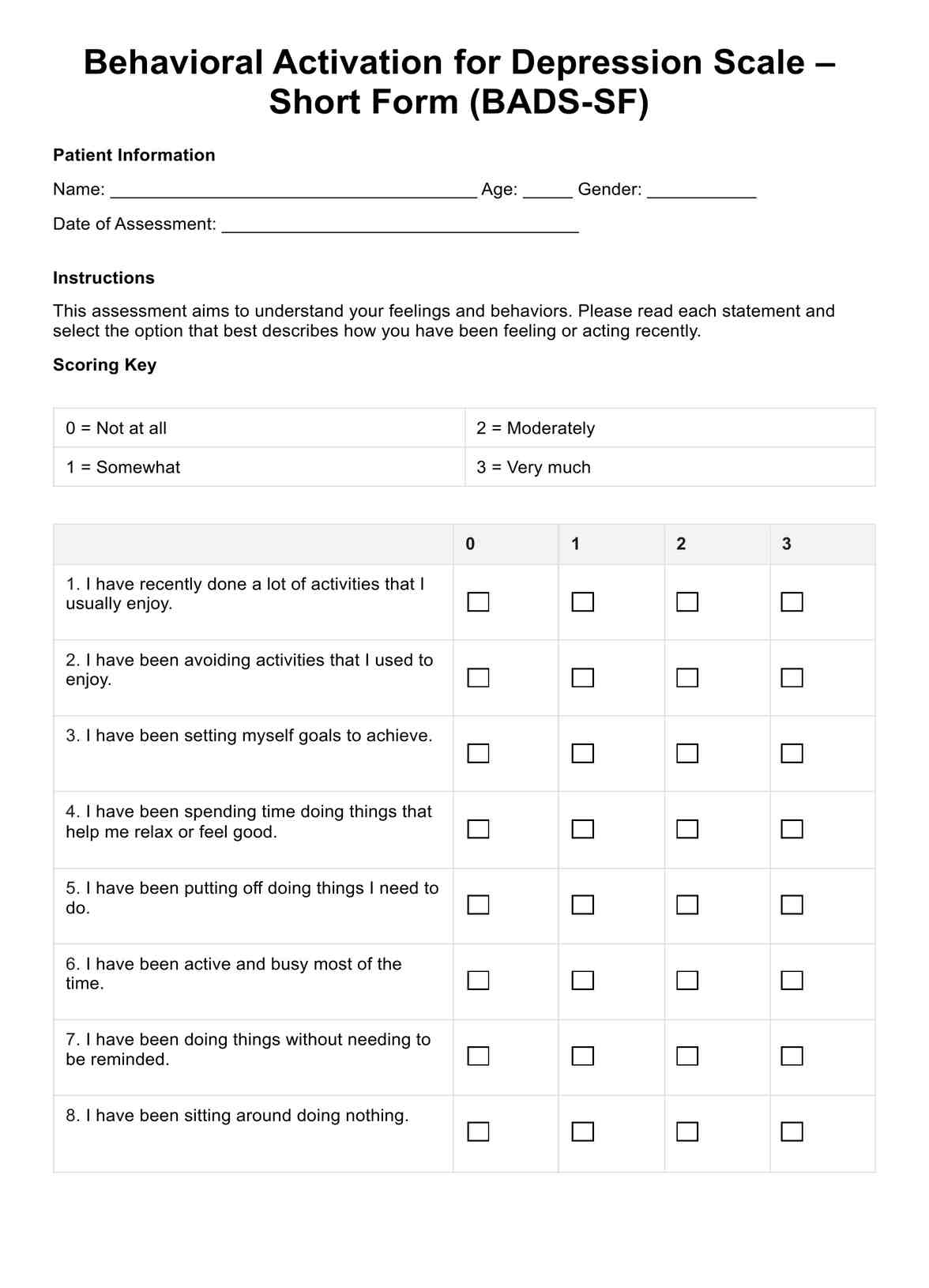The time required to complete the Behavioral Activation for Depression Scale – Short Form (BADS-SF) varies, typically taking around 10-15 minutes.

Behavioral Activation for Depression Scale – Short Form (BADS-SF)
Learn about Behavioral Activation for Depression Scale – Short Form (BADS-SF). Obtain a free PDF example to comprehend its practical application.
Use Template
Behavioral Activation for Depression Scale – Short Form (BADS-SF) Template
Commonly asked questions
The findings from the BADS-SF assessment are interpreted by assessing the individual's responses to gauge the level of depression and its impact on their behavior.
The BADS-SF is utilized to assess the level of depression and identify patterns of behavior that may contribute to or result from depressive symptoms.
EHR and practice management software
Get started for free
*No credit card required
Free
$0/usd
Unlimited clients
Telehealth
1GB of storage
Client portal text
Automated billing and online payments











